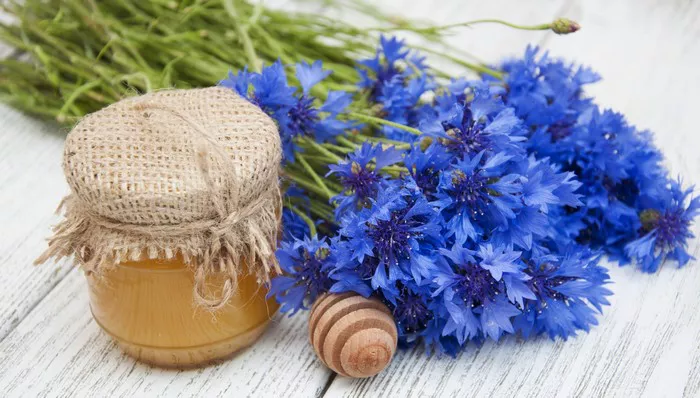Flowers are not just ephemeral beauties; they can be preserved to enjoy their charm long after they’ve been plucked from the garden or received in a bouquet. Dehydrating flowers offers a way to retain their delicate beauty, capturing a moment in time and allowing us to enjoy their presence for months or even years to come. While dehydrators are a popular tool for this purpose, they are not always readily available. Fear not, as we delve into the art of dehydrating flowers without a dehydrator.
Overview of Flower Dehydration
The process of dehydrating flowers involves removing moisture from the petals while preserving their shape, color, and fragrance. There are several benefits to dehydrating flowers, including the ability to create long-lasting floral arrangements, potpourri, or decorative crafts. Additionally, dehydrated flowers make wonderful gifts and can be used in various DIY projects such as handmade cards, candles, or framed art.
The general principle behind flower dehydration is simple: flowers are carefully dried to remove moisture, thereby preventing decay and preserving their natural beauty. However, achieving optimal results requires attention to detail and patience.
Materials Needed
Fortunately, you don’t need a fancy dehydrator to dry flowers effectively. Common household items can serve as excellent alternatives:
1. Paper: Absorbent paper, such as blotting paper, parchment paper, or newspaper, is ideal for drying flowers as it helps to wick away moisture.
2. Heavy Books: Thick, heavy books provide gentle pressure for pressing flowers, aiding in their flattening and drying process.
3. Oven: A conventional oven can be used to dry flowers quickly and efficiently, though it requires careful monitoring to prevent overheating.
4. Microwave: While unconventional, the microwave can be used for rapid flower dehydration, particularly suited for small, delicate blooms.
5. Silica Gel: This desiccant material is highly effective at absorbing moisture and preserving the shape and color of flowers.
Step-by-Step Guides
Regardless of the method chosen, the process of dehydrating flowers follows a similar set of steps:
1. Preparation of Flowers: Begin with fresh, unblemished flowers. Trim excess leaves and stems, leaving only a short stem attached to the flower head.
2. Arrangement for Drying: Depending on the chosen method, arrange the flowers accordingly. For air drying or pressing, lay them flat in a single layer, ensuring they are not touching. If using an oven, silica gel, or microwave, arrange flowers on a heat-safe surface.
3. Estimated Drying Times: Drying times vary depending on factors such as flower type, size, and humidity levels. Generally, flowers may take anywhere from a few days to a couple of weeks to fully dry.
Different Methods
1. Air Drying: This traditional method involves hanging flowers upside down in a well-ventilated area. Suitable for flowers with sturdy stems and petals.
2. Pressing: Flowers are placed between absorbent paper and pressed under heavy books for several days to flatten and dry them. Ideal for delicate blooms.
3. Oven Drying: Flowers are dried at a low temperature in the oven, typically around 100°F to 150°F (38°C to 65°C), until crisp. Quick and effective for a variety of flower types.
4. Microwave Drying: Flowers are microwaved in short bursts to remove moisture rapidly. Best suited for small, thin flowers to prevent overheating.
5. Silica Gel Drying: Flowers are buried in silica gel, which draws out moisture while maintaining their shape and color. Perfect for preserving intricate flower forms.
Flower Selection
Not all flowers are created equal when it comes to dehydration. Some varieties hold up better to drying processes than others. Generally, flowers with sturdy petals and minimal moisture content are ideal candidates for drying. Examples include roses, lavender, baby’s breath, and statice. Delicate flowers such as pansies and violets are better suited for pressing.
Post-Dehydration Care
Once your flowers are thoroughly dried, it’s essential to store them properly to maintain their quality. Store dehydrated flowers in a cool, dry place away from direct sunlight to prevent fading. Consider sealing them in an airtight container or wrapping them in tissue paper to protect them from dust and moisture. Dehydrated flowers can be used in various crafts and decorations, including floral arrangements, wreaths, potpourri, and greeting cards.
Troubleshooting
Despite your best efforts, you may encounter some challenges during the dehydration process. Here are a few common issues and how to address them:
1. Mold or Mildew: If you notice any signs of mold or mildew on your drying flowers, discard them immediately to prevent contamination. Ensure proper ventilation and humidity control in your drying area.
2. Fading Color: Exposure to sunlight can cause the colors of dried flowers to fade over time. Store them in a dark, cool place to maintain their vibrancy.
3. Brittleness: Over-drying can result in brittle, fragile flowers. Monitor the drying process closely and remove flowers promptly once they are dry to the touch but still pliable.
4. Uneven Drying: Rotate flowers periodically during the drying process to ensure even drying and prevent flat spots or uneven coloration.
Conclusion
In conclusion, dehydrating flowers without a dehydrator is not only possible but also a rewarding and enjoyable process. By utilizing common household items and following the step-by-step guides outlined above, you can preserve the beauty of your favorite blooms and unleash your creativity in various floral projects. With a little patience and attention to detail, you’ll soon be enjoying the timeless elegance of dehydrated flowers in your home.


